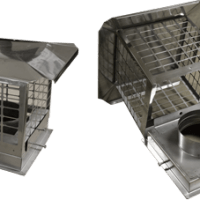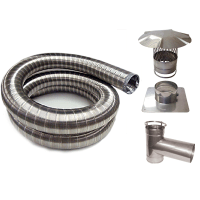By: Diana Berdini
A heating system converts fuel into heat which then flows through a house. The efficiency of a heating system depends on the amount of fuel consumed to meet heating needs. Using less fuel means your system has increased its energy efficiency.
One way to maximize output using the least amount of fuel is to reduce air leakage. Before deciding to replace or upgrade your present heating system you will have to consider how much of your present system can be saved. Can the boiler or furnace be salvaged by tuning or retrofitting? Are the heating ducts or water distribution pipes in good condition? Heating system work can be very inexpensive or quite costly depending on how much efficiency you want to buy.
Oil and gas fired furnaces require a constant supply of air to operate, because fire needs oxygen to burn. Air is also needed to exhaust the products of combustion up the chimney. Sometimes a furnace may become starved for air because household air is being rapidly expelled from the house through other routes such as a roaring fireplace, an upper- level window left open, a clothes dryer or exhaust fan left operating.
An air starved furnace can cause carbon monoxide to build up in quantities that can be dangerous. Warning signs of inadequate ventilation are stuffy atmosphere, lingering odors, back drafts and smoking fireplaces.
Additional ventilation can sometimes be required in houses with heating systems that require little or no indoor air, electrically heated homes, homes with chimney-free condensing furnaces, or houses with a fuel burning enclosed in a room with air for combustion from the outside. Super energy-efficient houses usually require special ventilation.
The Ontario Real Estate Association recommends the following tips to improve heat efficiency;
You can improve your heating efficiency and operation by turning down the thermostat. It’s a great way to save heat.
Hot air ducts are notorious wasters of heat and money. If your basement feels too warm, too much heat is seeping out of your ducts. You can seal all joints and seams in the ducting with vinyl duct tape. Some ducts registers empty into the basement and these should be sealed or closed if they are not needed. Ducts that run through unheated basements or attics should always be insulated.
Make sure both return air grills and supply registrars are kept free from any obstruction, including drapes and furniture. With forced air systems, the furnace filters should be changed regularly.
If you think you might be having problems with household air supply, contact a registered heating contractor for advice. If the problem turns out to be inadequate air supply, the contractor will be able to find ways to bring in outside air. There are specific requirements for this which depend on the type of system you have. Enjoy your heat efficient home!
Diana Lea Berdini is a real estate broker in the Collingwood and Georgian Triangle area. For more information about John and Di, please visit their Collingwood Real Estate Website.






